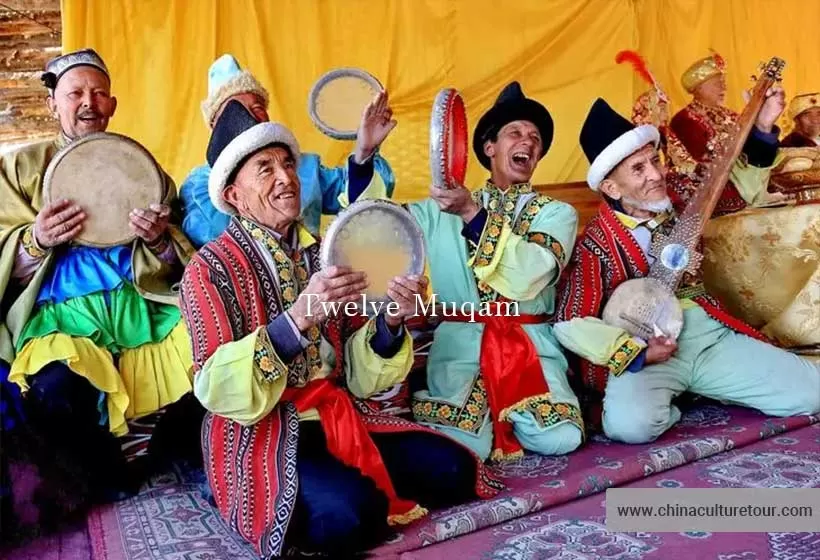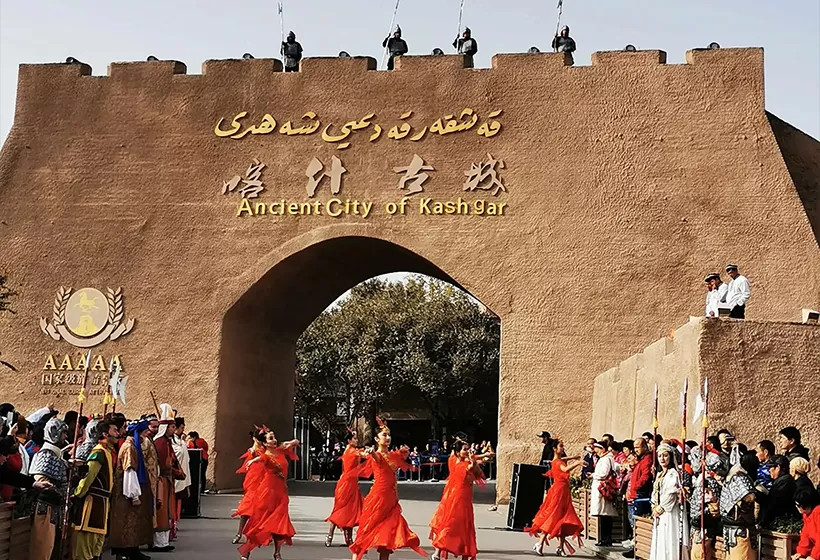China Silk Road travel itinerary, Plan a Private Trip to Explore the Heritages
Brief of the Asia Silk Road
 Giant Wild Goose Pagoda
Giant Wild Goose PagodaThe Silk Road, abbreviated as the Silk Route, generally refers to the overland Silk Road, broadly divided into the overland Silk Road and the maritime Silk Road.
In a narrow sense, the "Silk Road" refers to the land route that starts from ancient China's Chang'an(Xi'an) or Luoyang, passes through Gansu, Xinjiang, Central Asia, West Asia, and connects various countries around the Mediterranean. The starting point of the Silk Road is based on the capital city. During the Western Han Dynasty, the starting point was Chang'an (today's Xi'an); during the Eastern Han Dynasty, the starting point was Luoyang, during which time the Silk Road extended to Europe for the first time. During the Wei, Jin, Northern, and Southern Dynasties, there were multiple starting points such as Luoyang, Chang'an, and Pingcheng (Datong), and once Jiankang (Nanjing) was also considered as a starting point. During the Sui and Tang Dynasties, they were Tang Dynasty West Market(Chang'an), Kaiyuan Gate, and Luoyang City of Sui and Tang Dynasties respectively; during the Northern Song Dynasty, it was Kaifeng. Its original purpose was to transport silk produced in ancient China. In 1877, German geographer and geologist Ferdinand von Richthofen named the "western trading route between China and Central Asia, and between China and India, with silk trade as the medium, from 114 BC to 127 AD" as the "Silk Road" in his book "China".
The heritage sites along the Silk Road in China
Shaanxi Province
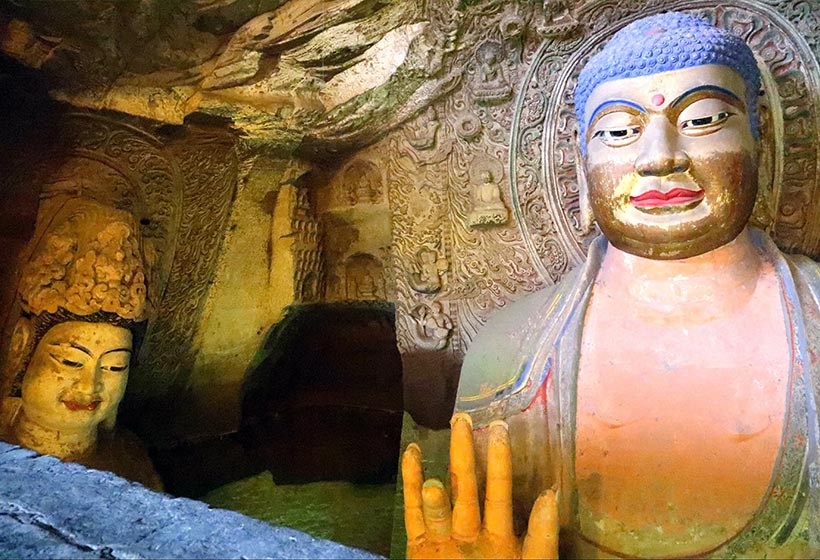 Binxian Big Buddha Temple
Binxian Big Buddha Temple1. Weiyang Palace: a majestic ancient palace complex located in Chang'an (modern-day Xi'an), serving as the administrative center of several Chinese dynasties.
2. Daming Palace, a magnificent imperial complex in ancient China, serving as the primary residence of the Tang Dynasty emperors and the political center of the empire.
3. Giant Wild Goose Pagoda, a historic Buddhist pagoda, renowned for its ancient significance and architectural grandeur.
4. Small Wild Goose Pagoda, a historic Buddhist pagoda, known for its elegant architecture and rich cultural significance.
5. Xingjiao Temple: located in Xi'an, is a renowned Buddhist temple with a rich history and cultural significance.
6. Tomb of Zhang Qian: an ancient burial site, believed to be the final resting place of the famous Chinese diplomat and explorer Zhang Qian, who played a crucial role in opening up the Silk Road during the Han Dynasty.
7. Binxian Big Buddha Temple: a significant Buddhist temple situated in Binxian County, Shanxi Province, China, renowned for its colossal Buddha statue and rich cultural heritage.
Henan Province
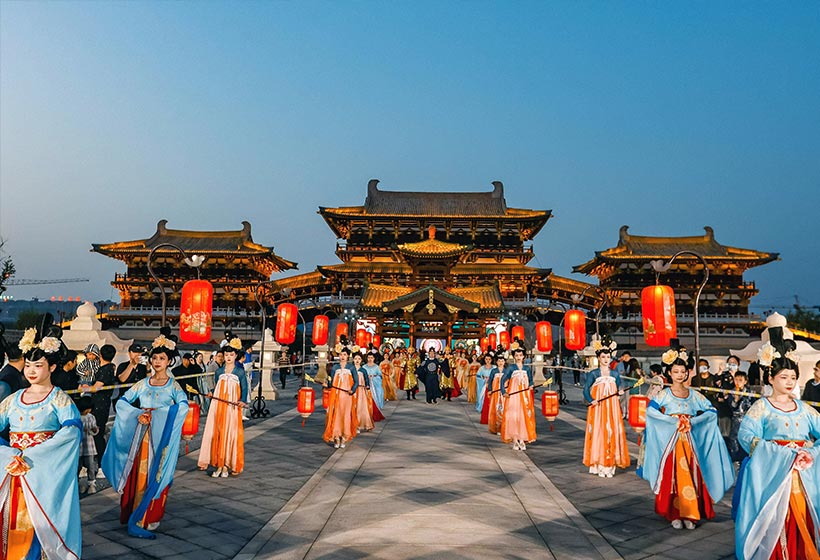 Luoyang Ancient Town
Luoyang Ancient Town1. Old Luoyang City of the Han and Wei Dynasties refers to the ancient city of Luoyang during the periods of the Han and Wei Dynasties in China, which served as a political, economic, and cultural center with profound historical significance.
2. Luoyang City Dingding Gate Relics are remnants of the historical Dingding Gate of Luoyang City, reflecting its significance as a strategic and cultural landmark in ancient China.
3. Hanhan Guguan Relics are archaeological remains associated with the Hanhan Ancient Pass, indicating its historical importance as a strategic and cultural site in ancient China.
4. Xiaohan Ancient Path Shihao Relics refer to the archaeological remnants associated with Shihao along the Xiaohan Ancient Path, highlighting its historical significance as a route and cultural site in ancient China.
Gansu
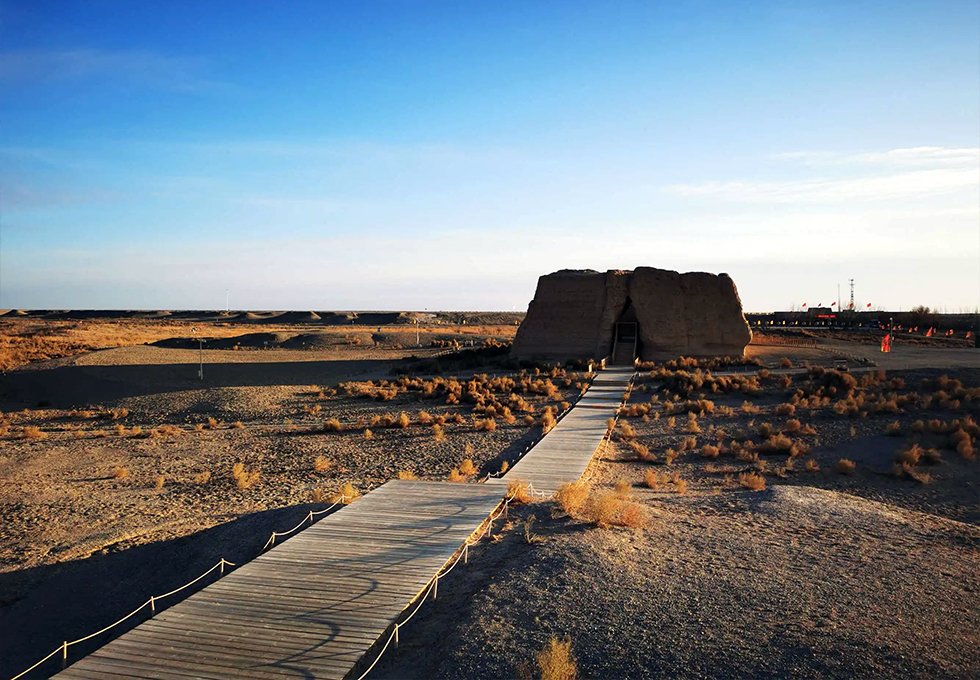 Yumen Pass
Yumen Pass1. Yumen Pass Relics are archaeological remnants associated with the historic Yumen Pass, representing its significance as a strategic fortress and trading post along the ancient Silk Road in China.
2. Xuanquanzhi Relics are archaeological remnants associated with Xuanquanzhi, an ancient site located along the Silk Road in China. These relics represent its historical significance as a vital hub for trade and cultural exchange during ancient times.
3. Maijishan Grottoes are a renowned series of caves carved into the side of Maijishan Mountain in Gansu Province, China. These grottoes contain a vast collection of Buddhist sculptures, statues, and murals, dating back to the Northern Wei Dynasty (5th to 6th centuries) and spanning several later dynastic periods. They are celebrated for their artistic and religious significance, showcasing a blend of Indian, Central Asian, and Chinese artistic influences.
4. Bingling Temple is a Buddhist cave complex situated along the Yellow River in Gansu Province, China, known for its stunning sculptures, murals, and ancient artifacts dating back to the Western Jin Dynasty.
5. Suoyang City is an ancient desert city located along the Silk Road in present-day Gansu Province, China, renowned for its well-preserved ruins and historical significance as a vital stop along the ancient trade route.
Xinjiang
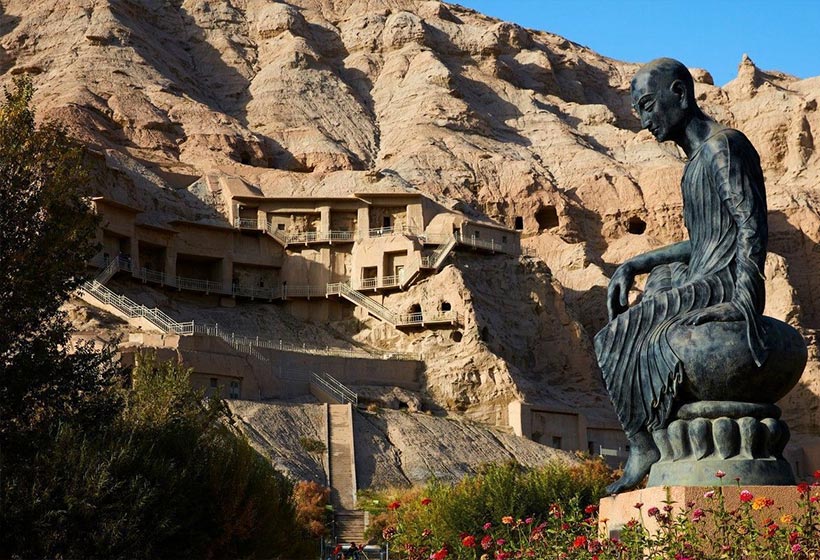 Kezil Thousand-Buddha Grottoes
Kezil Thousand-Buddha Grottoes1. Ancient City of Gaochang, also known as Kharakhoja, is a historic site located in present-day Xinjiang, China, notable for its well-preserved ruins dating back to the Han Dynasty and its significance as a major hub along the ancient Silk Road.
2. Ancient City of Jiaohe is a remarkable archaeological site in Xinjiang, China, featuring well-preserved ruins of an ancient desert city dating back over 2,000 years, characterized by its unique layout and adobe structures.
3. Kizilgaha Beacon Tower, built during the Han Dynasty, is located in Yixihala Township, Kuqa County, Xinjiang Uygur Autonomous Region, situated on a terrace at the mouth of Yanshuigou at the southern foot of the Qieletage Mountain. It served as an ancient military signaling system, using fire signals at night called "feng" and smoke signals during the day called "sui". It is the earliest and best-preserved beacon tower site along the northern route of the ancient Silk Road, strategically positioned in the prime area of the northern route of the Silk Road.
4. Kezil Thousand-Buddha Grottoes, also known as Kizil Caves, are a famous complex of Buddhist cave temples located in the Baicheng County of Xinjiang Uygur Autonomous Region. These grottoes date back to the ancient kingdom of Kuqa and are renowned for their extensive collection of Buddhist art.
5. Subash Buddhist Ruins, is the largest, best-preserved, and oldest Buddhist architectural site in the Western Regions. The discovery of silk fabrics, ancient coins, artifacts, and documents at the site provides evidence of the cultural and commercial exchanges that took place in the ancient Kucha region along the Silk Road.
6. Beiting Old City Relics refer to the archaeological remains of an ancient city located in the Beiting area of Xinjiang, dating back to various periods of history, including the Han Dynasty, Tang Dynasty, and later periods of Chinese history.
Customize my China Silk Road Itinerary
If you are looking for customized Silk Road travel services, please contact us, and we will design a value-for-money itinerary tailored to your requirements, interests, and travel budget.

China Silk Road Tour Itinerary for Your References
GREAT FAMILY CHINA TOUR
JULY 2024 We wanted to thank Grace at China Culture tour for organizing a great tour of China. We enjoyed our Beijing - Xian-Chengdu -Guilin -Yangshuo - Shanghai trip. Our local guides Bruce in Beijing, Susan in Xian, Jane in Chengdu, Mike in Guilin and Mary in Shanghai took care of us…read more details »
Teng Han L from SINGAPORE
Ready to Create a Unique Dream Travel?
